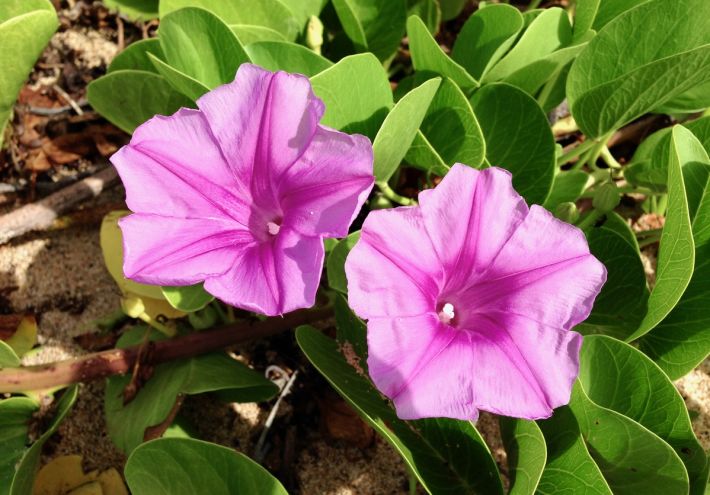In this Kūkahekahe, cultural consultant Manu Boyd KSK’80 shares a bit of surfing history through mele.
Duke Kahanamoku, Rabbit Kekai, Fred Hemmings, Wally Froiseth and Eddie Aikau are but a sampling of legendary Hawaiʻi men whose surfing skills, strength, and mana have inspired thousands in Hawaiʻi nei and around the world in the ancient Hawaiian, fiercely competitive sport of heʻenalu or wave sliding. Once considered the exclusive privilege and pastime of aliʻi, expert athletes today compete in this sport on the world stage.
Surfing legends like Rell Sunn carried on the tradition of wahine surfers in Hawaiʻi, and the prowess of women at heʻenalu, is prominent in mele, moʻolelo (historical accounts), and kaʻao (legends). Kaʻililauokekoa is remembered for her effortless handling of the challenging surf of Makaiwa at the mouth of the Wailua River on Kauaʻi.
Māmala, the kōnane-playing and ‘awa-drinking shark goddess impressed large crowds at Honolulu while skillfully riding the surf at Kanukuomāmala. Hiʻiakaikapoliopele and her intimate companion Hōpoe are remembered in lore for their zest in riding the current outside of Hōʻeu at Puna, Hawaiʻi. Keaomelemele, an important hula deity, is said to have enjoyed the best heʻenalu spots throughout the islands, surfing by day, and training in hula at night.
Celebrations of surfing appear throughout our culture and history and continue to be described in our mele. Hoʻokūkū heʻenalu were surfing challenges that would emerge during seasons where kai nalu (surf) conditions were absent. When conditions were mālie or calm, it is said that those with deep knowledge and skill could summon the surf from Kahiki or distant lands by offering mele.“Ka nalu nui a kū ka nalu mai Kona, ka malo o ka māhiehie” was a classic mele heʻenalu (surfing song) that was sung while striking the ebbing sea at the shoreline with the vines of the pōhuehue or beach morning glory to bring up the surf. The practice of gathering pōhuehue with its vibrant lavender pua (blossoms) and striking the ocean surface is recalled in a 1970s composition by Kumu Hula Dr. Kalena Silva: “ʻO ka pōhuehue i ka puʻeone, kā ka pōhuehue kai o ka heʻenalu,” the pōhuehue on the sand is struck to bring up the surf.
Robi Kahakalauʻs “Piʻi mai ka Nalu” recorded in the 1990s with the Hawaiian Style Band continues to echo in the ears of nearly two generations of listeners. Memorable lyrics provide simple surfing instructions: “Pae ana ‘oe i ka nalu nui, kīpapa, kū, a heʻe mai.” When you mount a big wave, push up from your lying position, stand, and glide to shore.
Irmgard Farden Aluli and Mary Kawena Pukui express the joy of surfing with good friends in “Nā Hoa Heʻenalu,” which likens ‘iwa birds gliding over the ocean to handsome, savvy surfers riding the billows. In the recent video tribute to retiring Trustee Micah Kāne KSK’87, KS Maui offered a solid hula performance of Auntie Irmgard’s mele.
Hawaiians have long shown a love of surfing that inspires others to adopt the sport. While attending school in San Mateo, California, heʻenalu was seen for the first time when three young aliʻi from Hawaiʻi took to the waves. With redwood planks milled to traditional specs, princes Kawānanakoa, Keliʻiahonui and Kalanianaʻole drew a large crowd completely unfamiliar with the Hawaiian spectacle. Years later, Hawaiian Olympic gold medalist and Hawaiian legend Duke Paoa Kahanamoku again popularized heʻenalu beyond Hawaiʻi’s shore.
Heʻenalu once again gained worldwide acclaim at the 2021 Summer Olympics at Tsurigasaki Beach in Chiba near Tokyo where Hawaiʻi’s own Carissa Moore, 2010 Punahou graduate, brought home the gold – a reminder that mana wāhine in the beloved sport of heʻenalu lives on.
We wait anxiously again for celebration of heʻenalu on the Olympic stage: Teahupoʻo (colloquially pronounced “Chopu”) is the world-famous Tahitian heʻenalu hub that will be the surfing venue during the 2024 Summer Olympics, hosted by Paris, France.
“Piʻi mai ka nalu, piʻi mai ka nalu, e heʻenalu kākou!”

Pōhuehue, a native beach morning glory, is associated with heʻenalu (surfing) in mele and hula. Photo courtesy of Burt Y. Kimura (2017).

A depiction of surfing that ran in the November 1858 magazine article “Our neighbors of the Sandwich Islands,” in Hutchings California Magazine.
TAGS
hoʻokahua,
kūkahekahe,
cultural conversations
CATEGORIES
Kaipuolono Article, Regions, Themes, Culture, Community, Hawaii Newsroom, KS Hawaii Home, Kapalama Newsroom, Kapalama Home, Maui Newsroom, KS Maui Home, Newsroom, Campus Programs, Hawaii, Kapalama, Maui, Community Education, Department News, Ho‘okahua
Print with photos
Print text only










